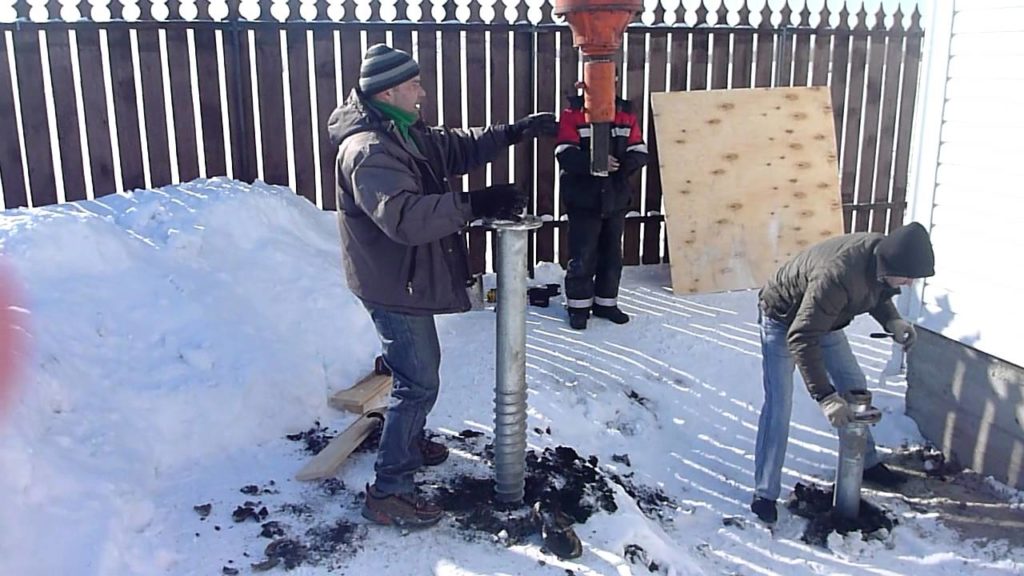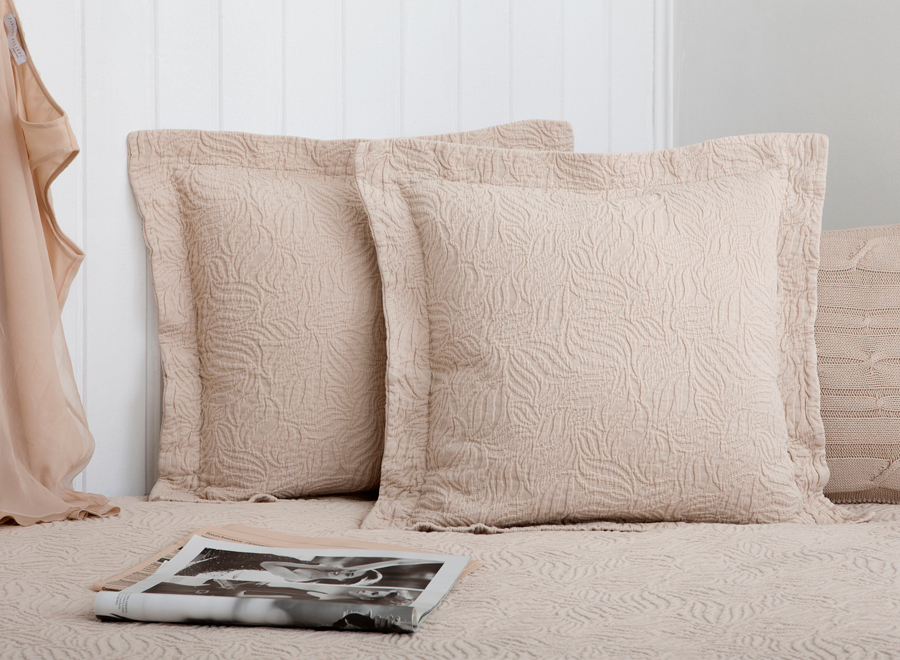Rating of the best screw piles for 2025

Any structure, regardless of its purpose, must be durable and reliable, the basis of which will be a solid foundation. In modern construction, many different types of foundations are massively used, one of which is pile-screw. It is this version of the basic design for construction that is least informatively covered. Thus, it is necessary to fill this gap and consider in detail the advantages and disadvantages, features and, in general, the feasibility of building this type of foundation.

Content [Hide]
Types of screw piles
The considered building elements can be divided into several types with distinctive features, including a set of technological and design parameters. Each of these types of products is adapted for use in different conditions, which depend on the expected load and soil characteristics. It is worth noting the factor that in some cases different piles can be used for the same foundation, because in different climatic zones there may be different loads on them. From this it is clear that the heterogeneity of pile elements can provide an adequate margin of safety, increasing the operational life of the structure.
Screw piles are subdivided according to the following characteristics:
- Direction of application;
- Size and number of blades;
- Tip type.
Additional characteristics include: bearing capacity, thickness and grade of steel produced and type of anti-corrosion coating. Additional characteristics are more optional and must be selected strictly individually.
Direction by scope
In total, there are four types of such directions:
- With one wide blade mounted on the tip at the bottom, this is the most common type for the private construction industry.With its help, it is possible to build a solid foundation on various soils. As a rule, it is used for small buildings for household purposes or for one-story houses based on frame panels or wooden buildings. However, if you correctly select the diameter of the blades, while simultaneously calculating the number of piles, you can build a foundation that can withstand a house of gas silicate blocks.
- Resistant to pulling out, shrinkage, with increased bearing capacity. Their main difference is a two-blade design, the blades of which are spaced along the height of the entire base. Perfect for the construction of medium-sized houses (2 floors). They are rarely used in individual construction, because special equipment is required to screw them in, it is almost impossible to manually screw them into the ground.
- With a conical screw and narrow blades - used in the field of labor-intensive construction, when it is carried out on complex and stony soils.
- Special piles - they are used for construction carried out in permafrost conditions, and a special technology is used to screw them in, providing special stability.
IMPORTANT! The most popular direction for the use of screw piles is, of course, private construction, in which materials of the first type are most often used.
Size and number of blades
The materials under consideration may have one blade or there may be more. Accordingly, they are called single-blade or multi-blade. The former are used for the construction of foundations in areas where soils have an increased bearing capacity.However, when using this type of fixture, especially if welded tips are installed on them, you should be prepared for the fact that they can break if the load exceeds the critical one. At the same time, the supports will lose their bearing properties, and this will negatively affect the strapping and the overall integrity of the foundation.
Multi-blade specimens are used for foundations on various types of soils, including even weak ones. They are characterized by increased load-bearing properties, resistant to increased loads of various types: pulling, horizontal or pressing.
The presence of a large number of blades on the shaft allows the use of a pile with a smaller pipe diameter, if it has sufficient wall thickness. The enhanced efficiency of these piles is obtained by the optimized placement of the blades along the shaft. The distance between the blades, their angle of inclination and pitch must be calculated individually, taking into account the location of the soil layer, as well as the composition of the soil itself at each construction site. Working with multi-vane variations on a smaller pipe diameter definitely requires a high level of skill and experience.
Tip types
Tips for the elements under consideration are cast and welded. The former are considered unconditionally reliable, because they are practically not able to deform, which cannot be said about the welded type. Piles with cast tips can be used for installation in especially dense and permafrost soils, as well as in soils with solid foreign or technogenic inclusions. The molded tip will not deform when it hits an obstacle, and in some cases may break it.Welded types are mainly used on weaker soils, and their strength qualities will depend on the thickness and grade of steel, as well as on welding and manufacturing technology. The main advantage of such elements is only their extremely affordable cost.
Advantages and disadvantages of pile structures
The main advantages of foundations on screw piles include:
- The ability to hold foundations on soils of almost any type in various climatic zones, including swampy areas and regions with permafrost.
- The arrangement of this type of foundation does not in any way affect the level of placement of ground currents.
- Screw bases are perfect for building a house on difficult terrain.
- Screw-type piles can be mounted in any season, because weather conditions are not able to affect the strength and quality of the structure being created - at the depth reached by the tips, the earth's temperature is permanently stable.
- Screw bases are not subject to heaving from frost when the soil freezes.
- Installation works are carried out in the shortest possible time. For example, if all the necessary conditions are present, such as: good land passability, a qualified team of builders, etc., a pile field with an average size can be completed within a working day, especially if special equipment is involved in the work. At the same time, piles can be used for tying and erecting walls immediately upon completion of installation, that is, they do not need time to set, gain strength and “ripen” after installation, unlike any reinforced concrete structures.Such a speed could not be achieved by any type of foundations, from all existing at the moment.
- It is quite possible to install piles for a small structure on your own, in extreme cases with the help of a small number of assistants, that is, you will not need to fit special equipment for work. This factor is extremely important if the construction budget is very limited and it is not possible to order special equipment due to financial considerations.
- For the installation of a pile-screw base, digging a pit, arranging formwork is not required. This will contribute to the absence of dug earth blockages on the construction site, the need to get rid of it by taking it out of the site, which will also reduce financial costs. Among other things, this type of foundation does not require work to level the construction site.
- The type of base under consideration does not extend capillary moisture, therefore, the walls and floors of the structure will remain dry.
- Design and installation of various engineering communications can be carried out directly during the installation of pile elements or even after their installation is completed.
- With proper selection of high-quality piles, their reliable installation, it is possible to ensure the durability of the foundation, which can be estimated for several decades.
- With good insulation of the base over the entire area, it is possible to equip a warm underground, which means that the surface of the floor covering will also be warm, without being subjected to cooling from the ground. Also, in some cases, it will be possible to equip some kind of “technical floor” under the structure without major earthworks.
- Screw pile foundation construction costs 30-40% less than a concrete foundation.Taking into account the fact that the creation of the foundation is always considered one of the costly construction stages, the financial savings, through the use of the materials in question, can be quite impressive.
The disadvantages of pile-screw structures include the following points that should be taken into account at the design stage:
- An excessive load on the screwed piles can lead to a weakening of the bearing capacity, resulting in a curvature of the strapping belt and deformation of the walls.
- It is imperative to create an effective drainage system from mounted piles, which means additional financial costs. Nevertheless, drainage and storm sewers should be arranged around foundations of any type.
- It is absolutely impossible to exclude the formation of rust on the metal base of the piles. High-quality and expensive samples can receive anti-corrosion protection at the factory by coating them with a zinc layer and polymeric materials. However, there are cases when the high chemical aggressiveness of the earth destroys even such protection. Accordingly, it is not necessary to equip pile-screw foundations near cell towers, electrified railroad tracks, developed quarries and existing mines, large electrical substations, high-voltage electrical transmission lines. In such areas, there is an increased probability of the manifestation of stray underground currents, which can sharply activate the processes of iron corrosion. It is all the more obvious that under such conditions it is absolutely forbidden to use piles to form a ground loop for a structure.
- It is always worth remembering that the bearing capacity of screw piles is not unlimited.However, they are perfect for the construction of low-rise houses, for larger ones it is not recommended to use them.
- Although such a possibility exists in theory, it will not be possible to obtain a full-fledged basement with a pile-screw base, the maximum is a small cellar.
- When building extensions to the house, some difficulties may arise if piles are screwed in at points that are close to the load-bearing walls of the main building. Nevertheless, this issue can be resolved by using special equipment;
- Peculiar costs (but not full-fledged shortcomings) can be called the fact that the production of the type of foundation in question will require proper control by the owner-customer if an invited team of builders is involved. Unfortunately, in the market for such services, cases have become more frequent when direct performers try to extract their own benefit in violation of pile installation technologies. As an example, the following situation can be cited: in order to provide effective protection against corrosion, the pile cavities, according to the technology, must be completely filled with concrete. However, some "specialists" ignore this requirement, saving on building materials, and immediately after screwing in, the heads are welded.
Mounting Features
Unlike other types of foundations, screw piles will not require the removal of a fertile soil layer and the creation of pits with holes. Here it is possible to confine ourselves only to marking the territory, the formation of a small hole, whose diameter will slightly exceed the diameter of the blades. So it will be more comfortable to ensure screwing. According to the current technology, screwing can be done mechanically or manually.In both cases, it will be necessary to drill a small hole to insert the lever, while maintaining the strict verticality of the pipe. Upon completion of screwing all the elements to the required depth, the protrusions should be aligned horizontally, and the excess sections should be cut off with a grinder. Concrete must be poured inside the pile pipe in order to increase the strength of the support and reduce the risk of corrosion. At the final stage, iron heads are welded onto the edge of the pipe, on which the lower piping is subsequently made from beams.
Difficulties of choice
When purchasing new piles, you should pay close attention to their technical parameters and design. In order to select a suitable and reliable building material, first of all, you need to decide on the diameter and length.
The most common and popular are the following diameters:
- 57 millimeters - small elements used for arranging fences or light buildings.
- 76 millimeters - such elements can also be used for light buildings or fences, but they are already capable of carrying some kind of weighting agent like corrugated board. They are perfect for an outdoor toilet or gazebo, able to withstand weight up to 2 tons.
- 89 millimeters - this diameter is already suitable for creating a veranda or a full-fledged terrace or a one-story house. The maximum weight to hold is 4 tons.
- 108 millimeters - this diameter is just the most common and most widely used in individual construction. Suitable for the construction of two-story houses, various types of outbuildings, small brick buildings. Can withstand maximum weight up to 6 tons.
IMPORTANT! There are variations with a diameter of up to 325 millimeters, but their use is isolated special cases.
As for the length of the pile, this parameter should be selected based on the type of soil, its complexity and hardness. If there is a solid clay layer on the site, then the longer the pile, the stronger the foundation will be. On difficult ground, during installation, it is required to deepen the screw as slowly as possible, removing pieces of clay as it enters. When the screw stops ejecting clay, it means that the required depth has also been reached.
Rating of the best screw piles for 2025
Budget segment
3rd place: "SVSN-57/200/1500"
votes 0
This pile with a medium diameter welded tip is suitable for arranging small lightweight structures or outbuildings. Designed to work on soft ground. Fits perfectly and does its job perfectly. Before starting installation, it will require cutting a hole in the pipe to facilitate installation. The recommended cost for retail chains is 950 rubles.

- Ease of screwing;
- Adequate cost;
- Sufficient length.
- Not suitable for difficult soils.
2nd place: "Screw Pile Ø89/3/2500 mm"
votes 0
This product is made of high quality steel and has an electric welded tip. Features an elongated tube. The wall thickness is sufficient to withstand the negative effects of underground soil substances. Suitable for arranging medium-sized objects, such as one-story houses. Screwing can be carried out both manually and with the help of special equipment. The recommended cost for retail chains is 1150 rubles.

- Extended variation;
- Proper quality;
- Thick walls.
- Not detected.
1st place: "SVSN-76/250/2500"
votes 0
This Russian-made building element is pre-equipped with a hole for mounting the mounting lever. The entire structure is made of durable steel grade St2ps, and the diameter of the level above average suggests the possibility of installation under buildings of medium weight. The wall thickness is 4 millimeters, which is enough for the upcoming tasks. The tip is made by electric welding. The recommended cost for retail chains is 1350 rubles.

- Thickened walls;
- Excellent blade angle;
- Easy installation.
- Not detected.
Middle price segment
3rd place: "Screw Pile 57/3/1500"
votes 0
The part, although it does not have a large length, an increased diameter, but has sufficiently thick walls, which allows it to be used for arranging outdoor gazebos or small terraces. The mass of each element is 5.5 kilograms, the steel used is St2ps, the blade has a diameter of 180 millimeters. It is quite possible to install on the ground of medium hardness. Able to withstand loads up to 1 ton. The recommended cost for retail chains is 1500 rubles.

- Quality steel grade;
- Good weld tip;
- Wide blades.
- Somewhat short.
2nd place: "TAVROS Screw pile 57x1500 mm"
votes 0
This type of product is distinguished by the perfect geometry of the helical blade, as well as the presence of a double anti-corrosion coating - fluoridation and polymer-powder enamel. With the help of this sample, the foundation can be mounted on any type of soil and at any time of the year. Installation can be carried out both independently and with the help of special equipment.The manufacturer positions the model as particularly durable, designed for a long service life. The recommended cost for retail chains is 2000 rubles.

- Extended service life;
- Perfect screw geometry;
- Quality production.
- Not detected.
1st place: "PCM-pile with a cast tip 57*2500"
votes 0
This product is multi-turn and has a cast tip. The working tube is extended. Perfect for creating small garden forms (lanterns, awnings, benches, gazebos). Commercial use is possible for the installation of advertising structures and road signs. Has an anti-corrosion coating. The pipe has holes for mounting a flange (not supplied). The recommended cost for retail chains is 2850 rubles.

- Many turns;
- Variety of applications;
- Cast tip;
- Flange hole.
- Flange not included.
Premium class
3rd place: "BAU SVKS T4 89×1200 mm"
votes 0
This cone-spiral product is produced using hot-dip galvanizing technology inside and out. During installation, additional concreting is not required. The service life will depend on the chemical aggressiveness of the soil and, at best, can reach 100 years. The design provides for a convenient bolted connection, therefore cutting the pile and additional welding work is not required. The method of fixation is "pipe to pipe". If desired, it is possible to perform a headline. Installation is carried out both manually and with the help of special equipment. Can work on sandy soils and rocks. Perfectly will be suitable for objects of capital construction.The recommended cost for retail chains is 3,000 rubles.

- The best ratio of price and quality;
- Extended service life;
- Work with various types of soil.
- Not detected.
2nd place: "RSM-bladed pile SVS-89x3.5-3.0 m"
votes 0
A very heavy variation used for the construction of capital construction projects. It is a very long pipe (3.5 meters) with a pointed welded tip and a wide helical blade. The pipe has a diameter of 89 millimeters, which indicates the possibility of building two-story houses, piers, piers, baths and various large outbuildings on its basis. The recommended cost for retail chains is 4,000 rubles.

- Very long length
- Used for large buildings;
- Wide blades.
- Inflated price tag.
1st place: "RSM-Pile with a cast tip 108*3000"
votes 0
This product is a multi-turn device with a cast tip. It has the highest diameter (108 millimeters), the largest wall thickness (4 millimeters), the largest length (3 meters). It will become an excellent fundamental basis for a frame house, a house built using the technology of light steel thin-walled structures, a SIP-panel house, a large bath. At the same time, it is suitable for sliding gates, utility blocks, gazebos, car sheds and verandas. The design provides a hole for the flange, the product has an anti-corrosion coating. The recommended cost for retail chains is 6,000 rubles.

- Complete versatility;
- massiveness;
- Quality production.
- High price.
Instead of an epilogue
The analysis of the market of the materials under consideration found that for the most part it is occupied by representatives of Russian production. They offer very reasonable prices with decent quality. At the same time, the most expensive and high-quality premium class is completely dominated by foreign companies, however, their products are often highly specialized and have an exorbitant price tag.
new entries
Categories
Useful
Popular Articles
-

Top ranking of the best and cheapest scooters up to 50cc in 2025
Views: 131651 -

Rating of the best soundproofing materials for an apartment in 2025
Views: 127690 -

Rating of cheap analogues of expensive medicines for flu and colds for 2025
Views: 124519 -

The best men's sneakers in 2025
Views: 124033 -

The Best Complex Vitamins in 2025
Views: 121939 -

Top ranking of the best smartwatches 2025 - price-quality ratio
Views: 114980 -

The best paint for gray hair - top rating 2025
Views: 113395 -

Ranking of the best wood paints for interior work in 2025
Views: 110318 -

Rating of the best spinning reels in 2025
Views: 105329 -

Ranking of the best sex dolls for men for 2025
Views: 104366 -

Ranking of the best action cameras from China in 2025
Views: 102216 -

The most effective calcium preparations for adults and children in 2025
Views: 102011









